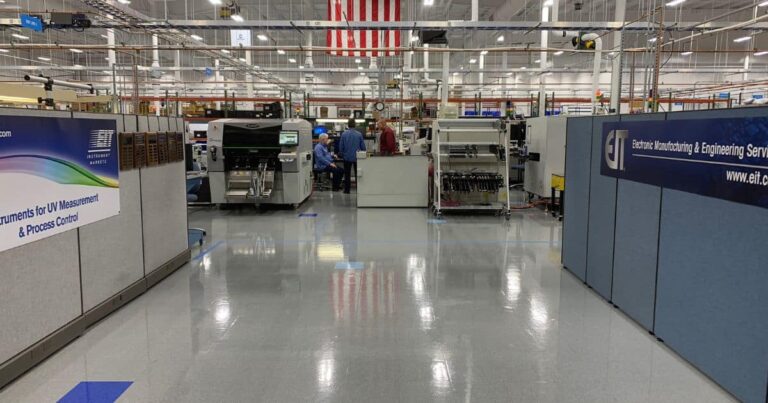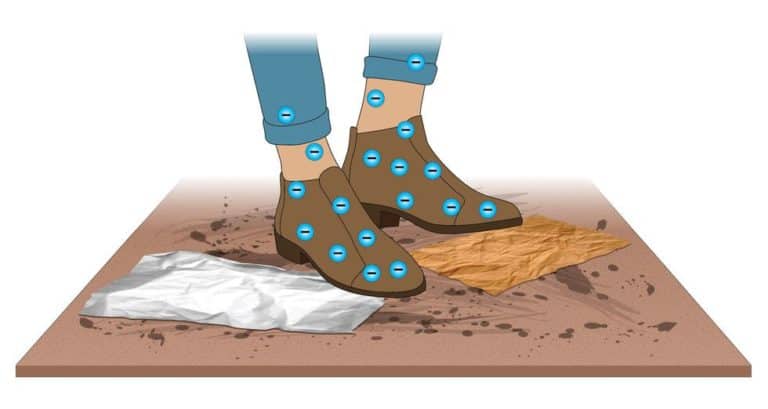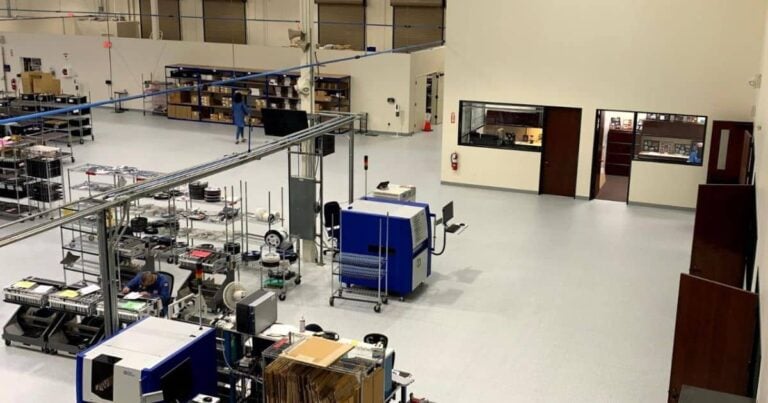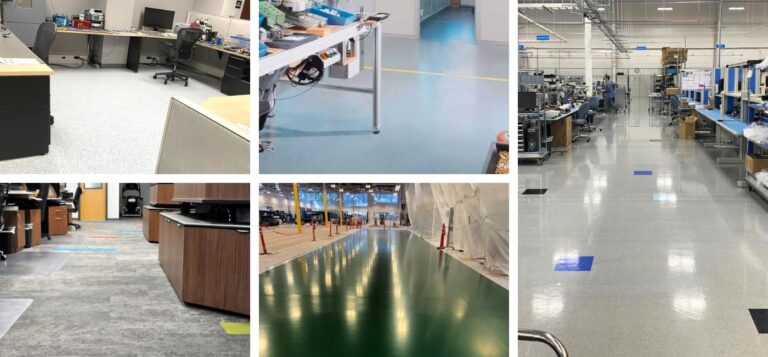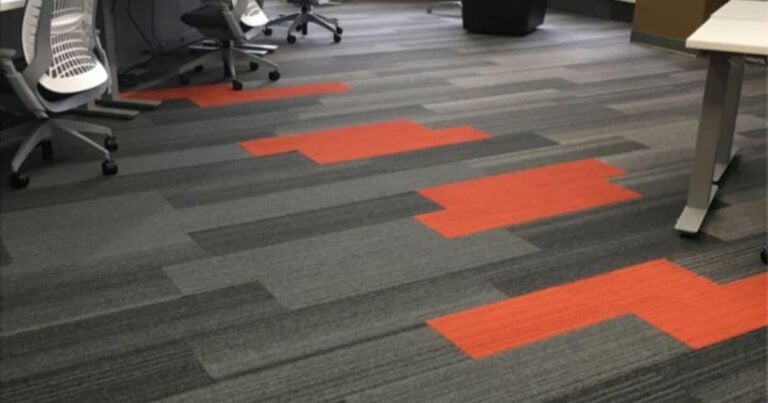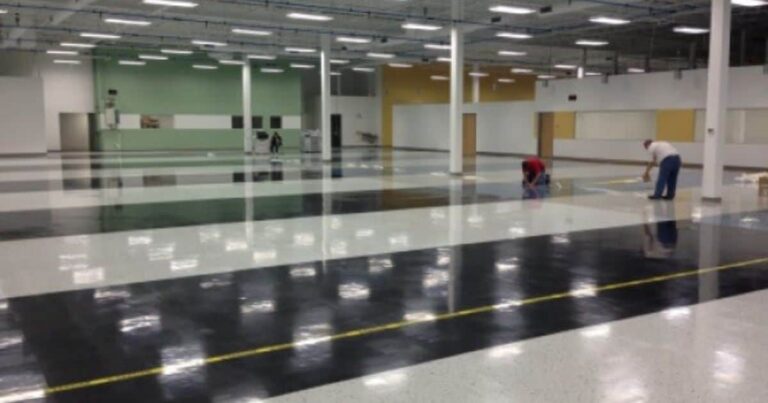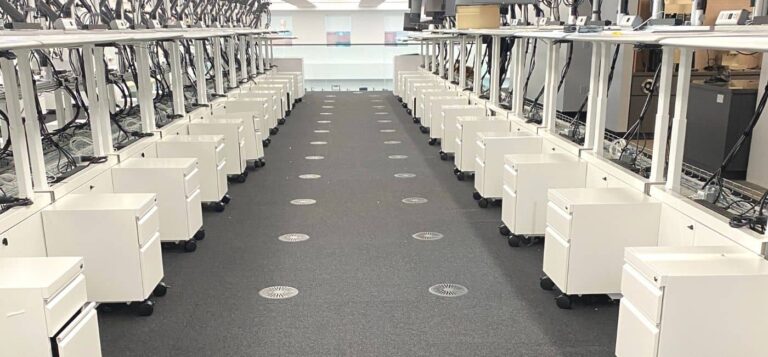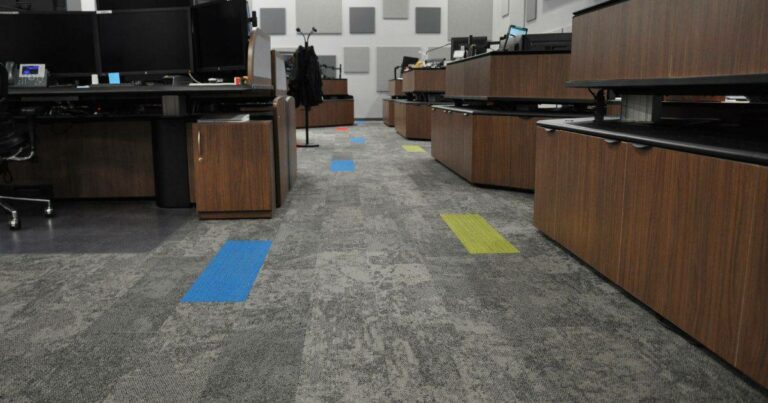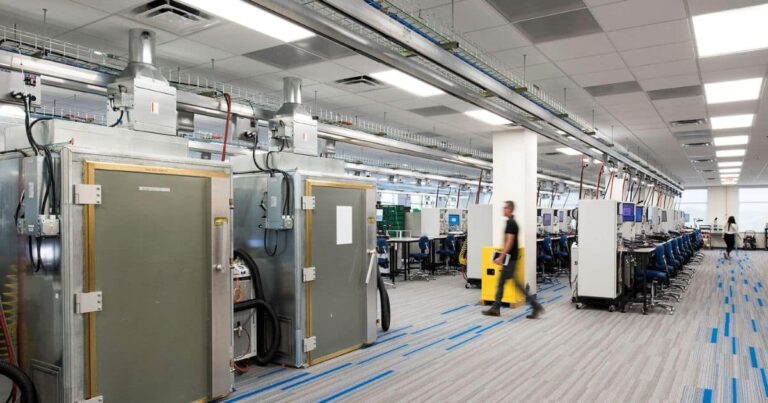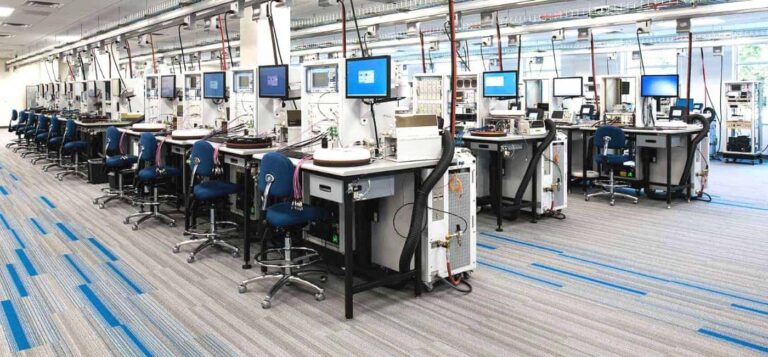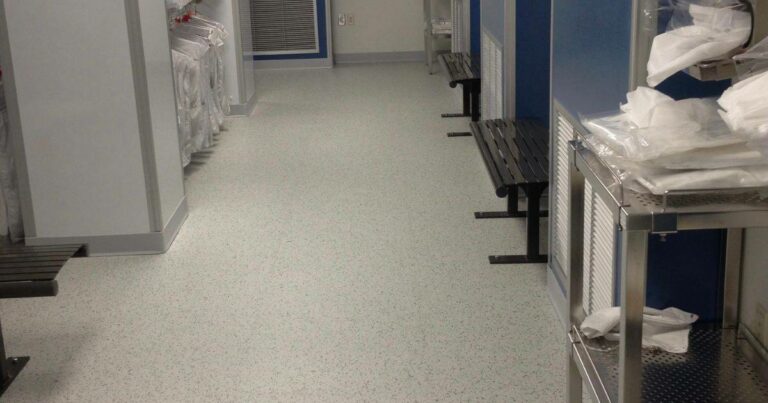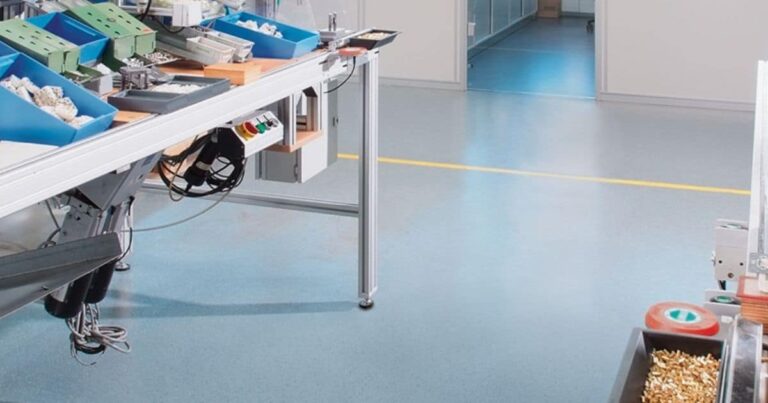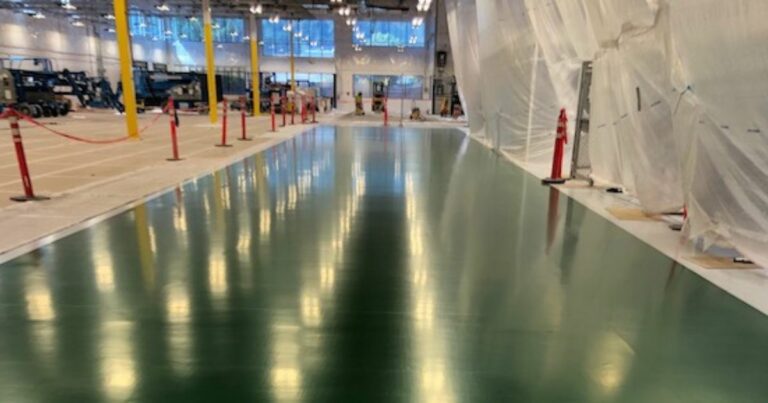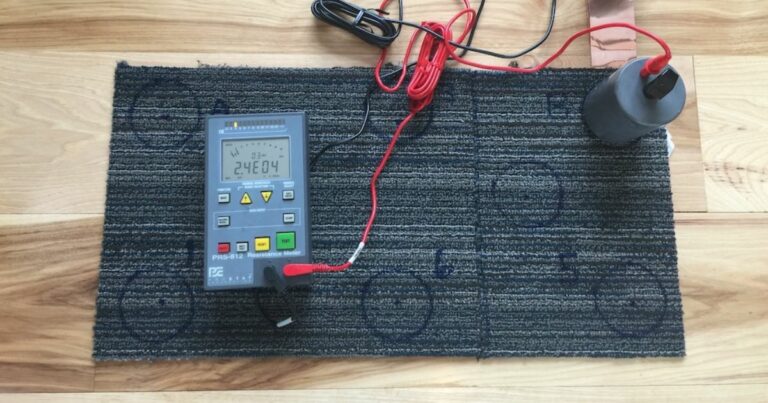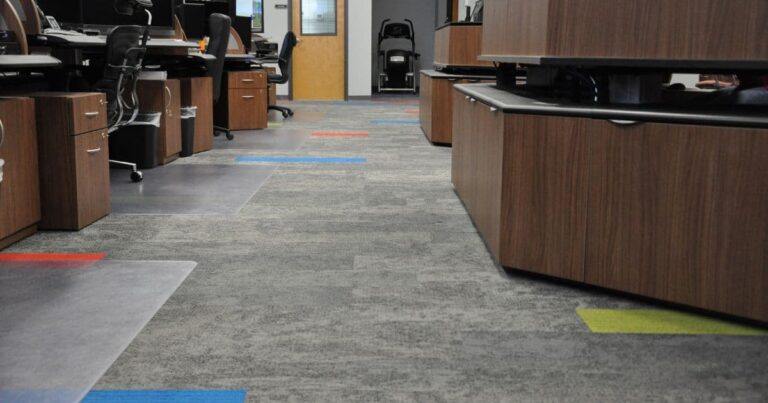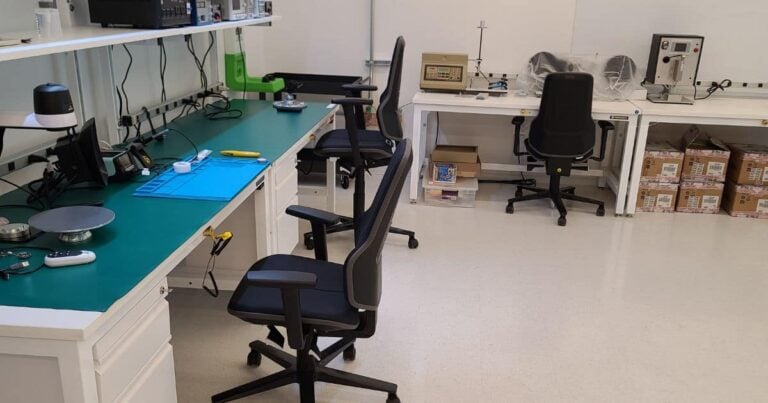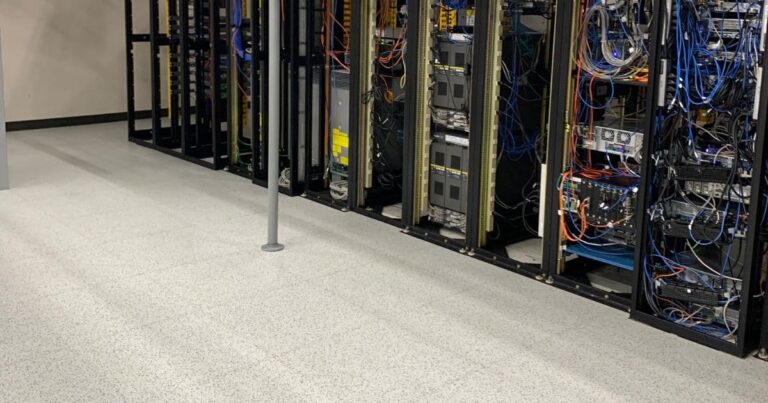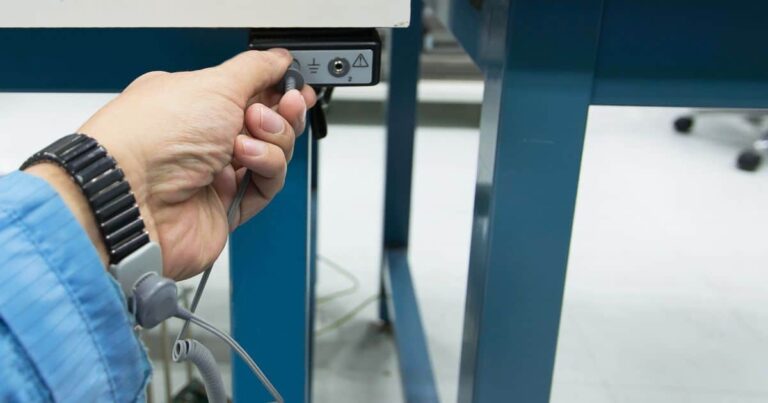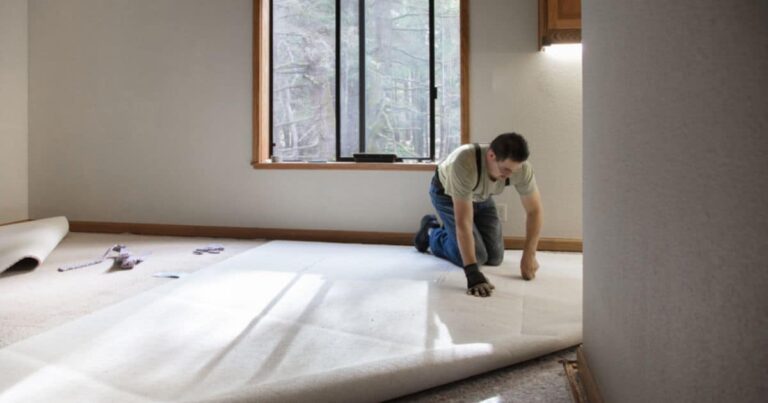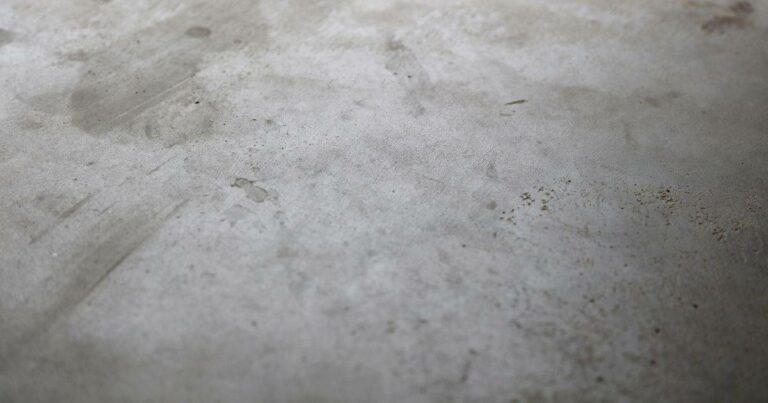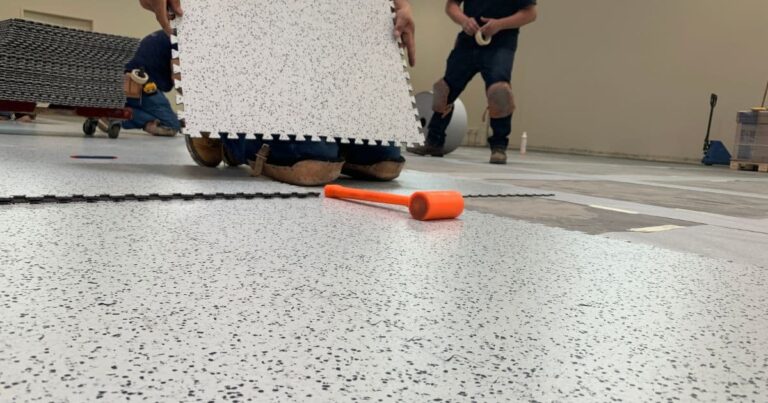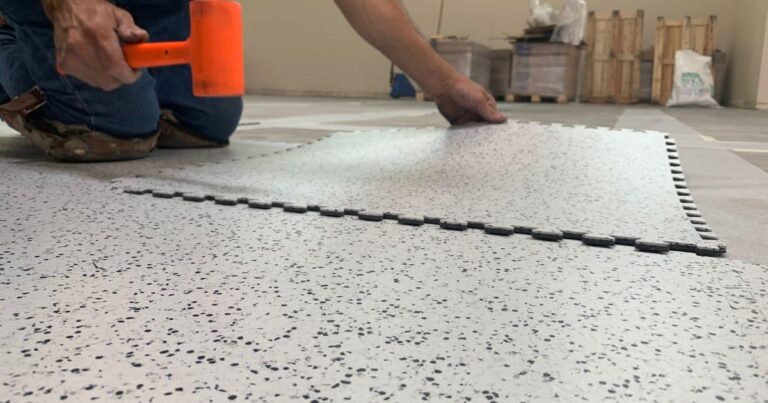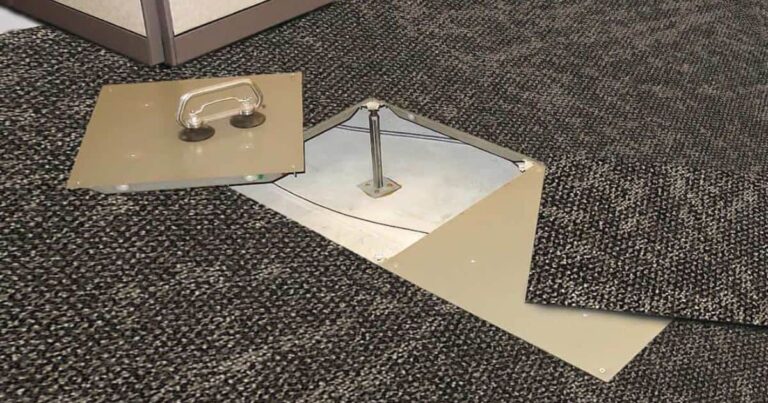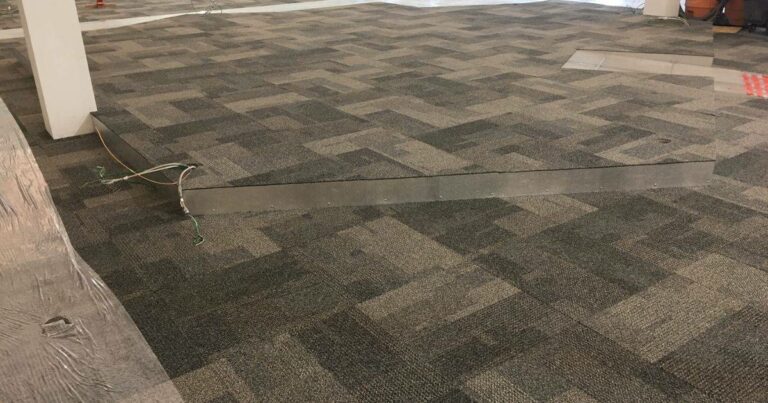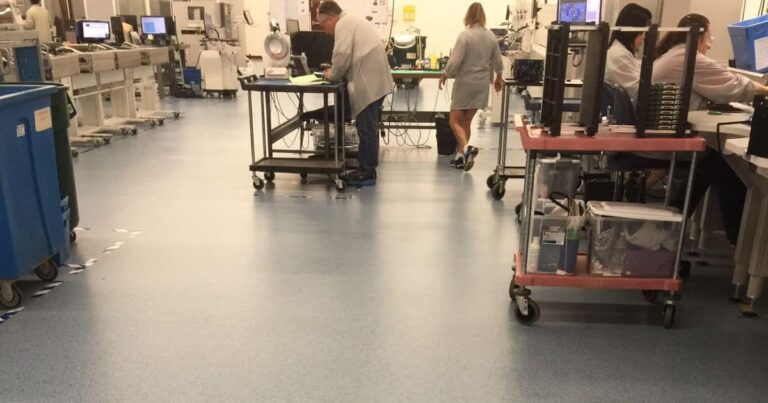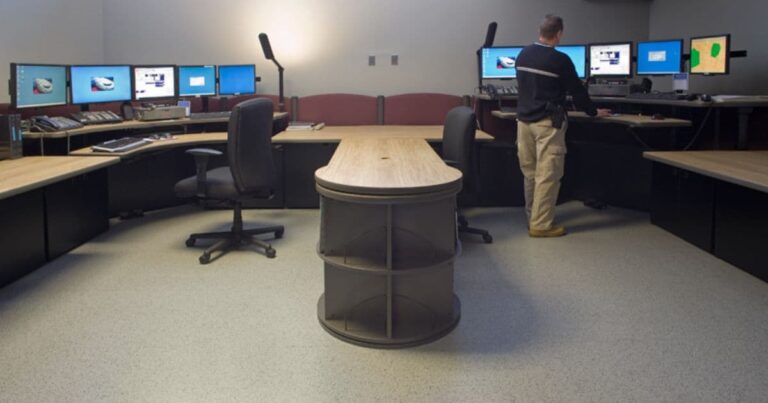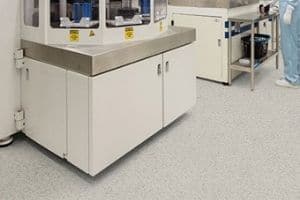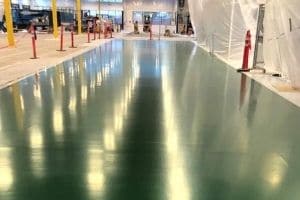FAQ: Does ESD flooring lose its electrical properties?
FAQ: Does ESD flooring lose its electrical properties?
The static-control properties of a well-designed ESD flooring material should last as long as the floor. In high-performance, permanently protective ESD floors, elemental conductive or dissipative materials, such as carbon and graphite, are embedded in the manufacturing process. Assuming the additives are bonded to the material in adequate concentration, and the fibers or filaments are exposed—creating an electrical bond with the shoe soles of people walking on the floor or with objects such as rolling carts or ESD chairs—the material should dissipate static throughout the life of the floor.
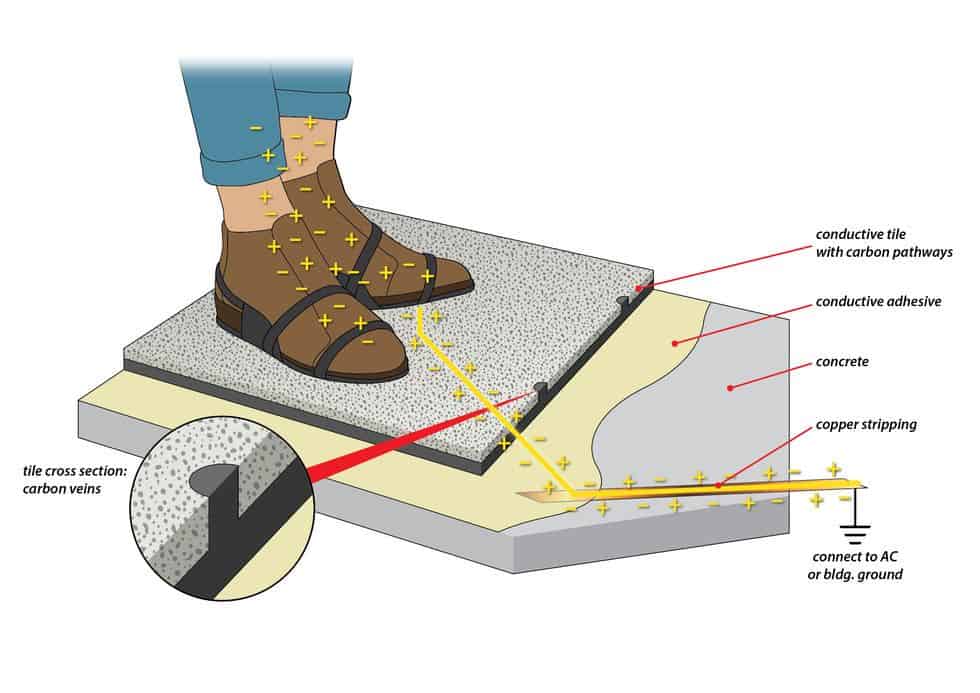
Finishes and Some Flooring Materials Lose Conductivity Over Time

All ESD Floors Must Be Properly Cleaned and Maintained
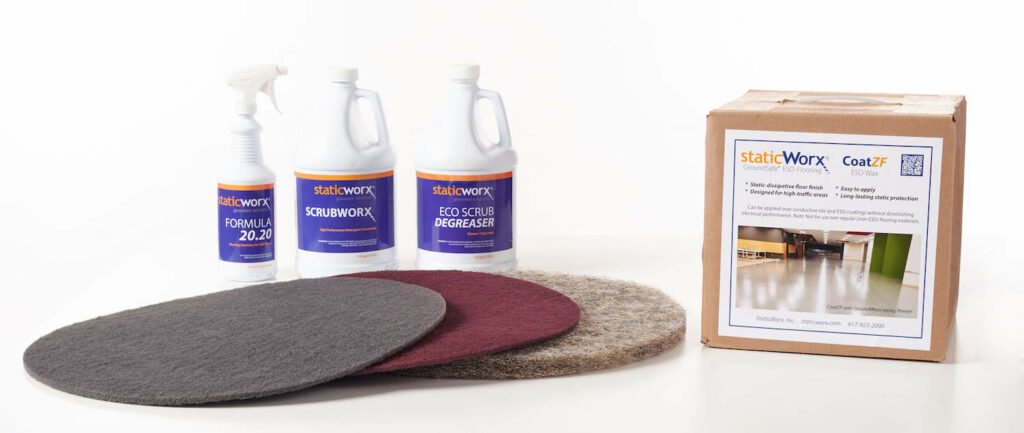
To perform effectively, all ESD floors must be properly cleaned and maintained on an ongoing basis, at intervals appropriate to the material and site conditions. A layer of dirt and debris will act as an insulator, diminishing the performance of any ESD floor.
Floors with inherent conductivity, such as AmeriWorx vinyl tile and other StaticWorx floors, do not need any ESD wax or finish for electrical performance. An ESD floor should never be waxed with a generic (non-ESD) floor wax. Generic floor waxes contain static-generating polymer emulsions that hinder ESD performance.
Properly cleaned and maintained, a well-designed ESD floor should perform at optimal effectiveness throughout the life of the installation.
- Contact StaticWorx for information on cleaning and maintaining your ESD floor or to purchase cleaning materials designed to clean and protect ESD flooring.
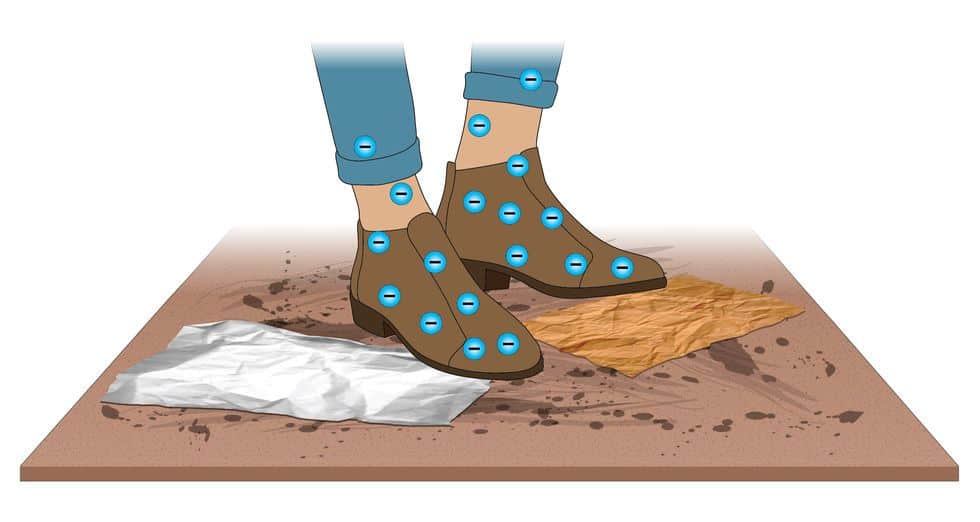
More FAQs
Learning Center Articles
- ESD Basics
- Installation & Maintenance
- Selecting & Specifying an ESD Floor
- Technical Information
- 7 Common Mistakes Selecting an ESD floor
- A Guide to ESD Flooring Selection
- Avoid Costly Failures: What You Need to Know When Specifying ESD Flooring
- Choosing ESD Flooring for:
- ESD Footwear: What Is It and When Is It Necessary?
- ESD Footwear for Electronics Manufacturing and Handling Applications
- Facility Managers’ Guide to Selecting ESD Flooring
- The Need for Due Diligence in Specifying Static-Free Flooring
- Standard of Care for Specifying Floors in Mission-Critical Spaces
- Understanding the Hidden Costs of ESD Flooring

StaticWorx high-performance static-control floors protect electronic components, explosives, and high-speed computers from damage caused by static electricity. ESD flooring is part of a system. Choices should always be based on objective, researched evidence. When you partner with us, we look at all possible items that may need to integrate with the floor, and, focusing on your goals and objectives, help you find the right floor for your application.





